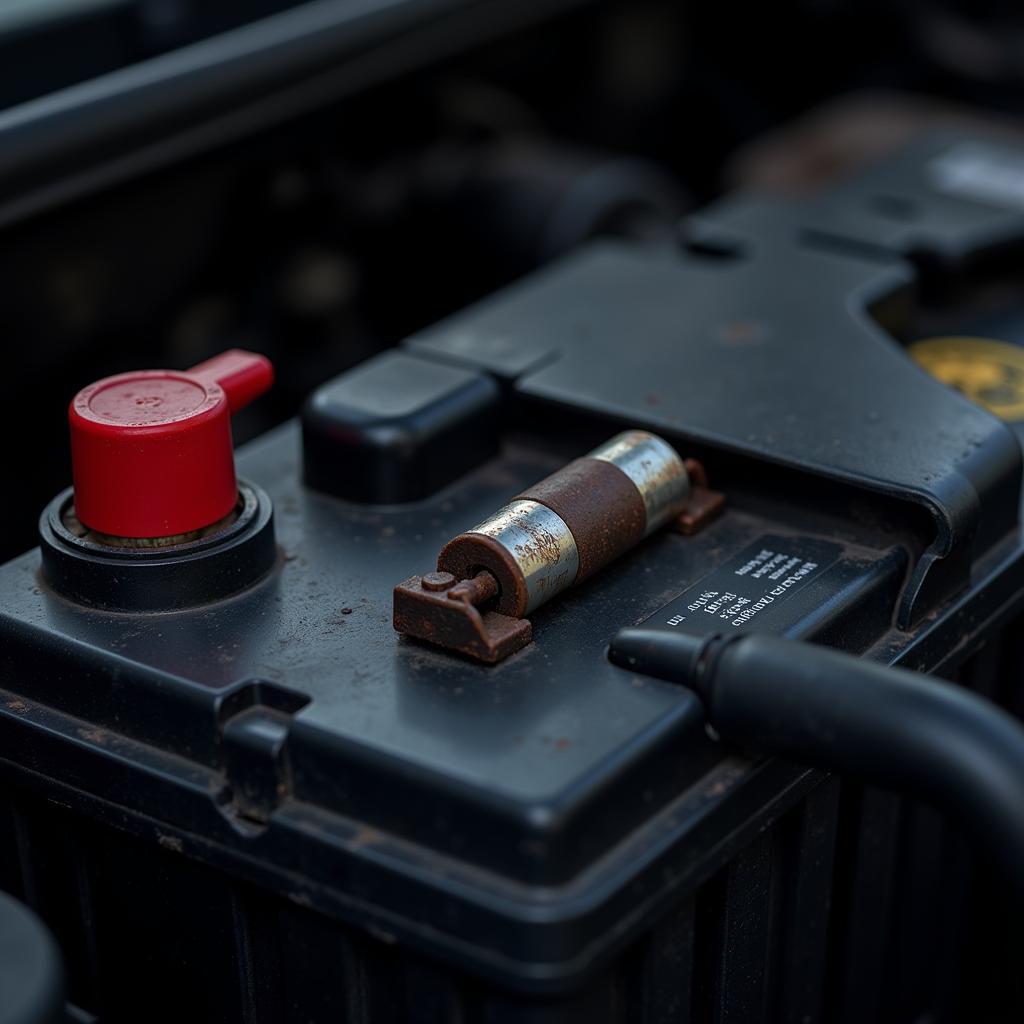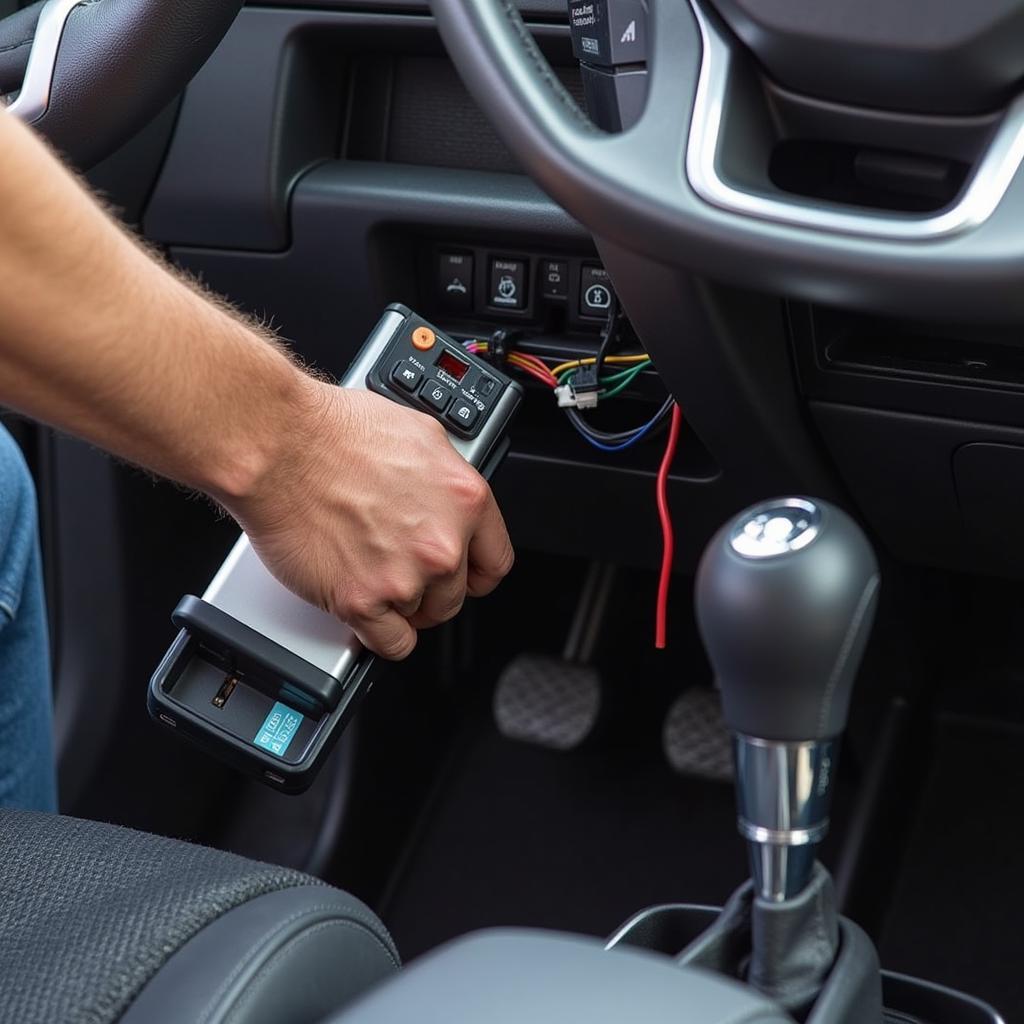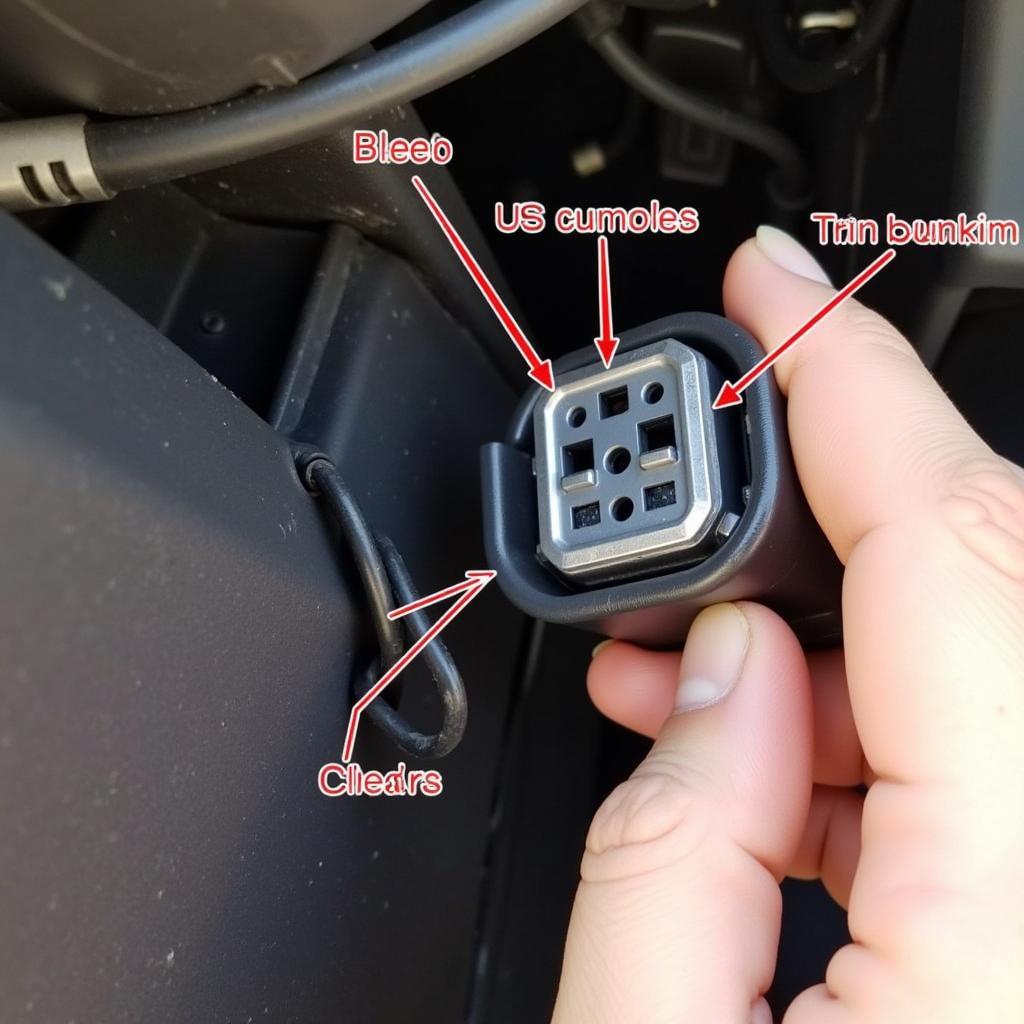The 2017 GMC Acadia is a popular SUV, but like any vehicle, it can experience battery issues. This guide will explore common 2017 GMC Acadia battery problems, their causes, and solutions, empowering you to diagnose and potentially fix them yourself.
Understanding Your 2017 GMC Acadia Battery
Before diving into troubleshooting, it’s essential to understand the role of your Acadia’s battery. It not only starts the engine but also powers various electrical components like lights, radio, and power windows, even when the engine is off. A failing battery can lead to numerous problems, from a simple no-start to more complex electrical malfunctions.
Common 2017 GMC Acadia Battery Problems
Several battery-related issues can plague 2017 Acadia owners. These include slow cranking, clicking sounds when turning the key, dimming headlights, and even a complete inability to start the vehicle. Other symptoms might include malfunctioning interior lights or issues with the power liftgate.
Slow Cranking: A Telltale Sign
Slow cranking is often the first sign of a weakening battery. The engine struggles to turn over, indicating the battery isn’t delivering enough power. This can be caused by a low charge, corroded terminals, or even a failing starter.
 2017 GMC Acadia Slow Cranking Battery Problem
2017 GMC Acadia Slow Cranking Battery Problem
Clicking Sounds: When the Starter Struggles
Clicking sounds when you try to start the engine often indicate a dead battery or a failing starter. The clicking is the sound of the starter solenoid attempting to engage but lacking the necessary power.
Electrical Malfunctions: Beyond Starting Problems
A failing battery can also cause various electrical malfunctions, such as dimming interior and exterior lights, issues with the radio or navigation system, and problems with power windows or locks.
Diagnosing Your 2017 GMC Acadia Battery Problems
Diagnosing battery problems usually involves testing the battery’s voltage and checking for corrosion on the terminals. A multimeter can be used to measure voltage, while a visual inspection will reveal any corrosion.
Testing the Battery Voltage
A healthy battery should read around 12.6 volts. A lower reading indicates a low charge or a failing battery.
Checking for Corrosion
Corrosion on the battery terminals can impede the flow of electricity. Cleaning the terminals with a wire brush and baking soda solution can often resolve this issue.
Solutions for 2017 GMC Acadia Battery Problems
Depending on the diagnosis, solutions can range from a simple jump-start to a complete battery replacement. In some cases, the problem might not be the battery itself but a failing alternator or a parasitic drain.
Jump-Starting Your Acadia
A jump-start can provide a temporary solution if your battery is simply discharged. However, if the battery continues to discharge quickly, it might need replacing.
Replacing Your Acadia’s Battery
Battery replacement is a relatively straightforward process. Disconnect the negative terminal first, then the positive terminal. Install the new battery and reconnect the terminals, positive first, then negative.
Addressing Alternator or Parasitic Drain Issues
If a failing alternator or a parasitic drain is the culprit, professional help might be necessary. These issues require more advanced diagnostic tools and expertise.
Expert Insights
“A common misconception is that a new car won’t have battery issues,” says automotive electrical specialist John Davis. “However, factors like extreme temperatures and short trips can shorten a battery’s lifespan, even in a relatively new vehicle like a 2017 Acadia.”
“Regular battery maintenance, such as cleaning the terminals and checking the voltage, can prevent many problems,” adds Sarah Miller, another expert in automotive diagnostics. “Addressing these issues promptly can prevent further damage and ensure the smooth operation of your vehicle.”
Conclusion
Understanding common 2017 GMC Acadia battery problems can save you time, money, and frustration. By following the diagnostic steps and solutions outlined in this guide, you can effectively address battery issues and keep your Acadia running smoothly. Remember, regular maintenance and prompt attention to warning signs are key to preventing future battery problems.
FAQ
- How long does a 2017 GMC Acadia battery last? Typically, a car battery lasts 3-5 years.
- What are the signs of a bad alternator in a 2017 GMC Acadia? Dimming lights, whining noises from the engine, and difficulty starting are common signs.
- Can I replace the battery in my 2017 GMC Acadia myself? Yes, it’s a relatively straightforward process.
- How can I prevent 2017 GMC Acadia battery problems? Regular maintenance like cleaning terminals and checking voltage can help.
- What should I do if my 2017 GMC Acadia won’t start? Try jump-starting it. If that doesn’t work, it might be a more serious issue.
- Where can I get a replacement battery for my 2017 GMC Acadia? Auto parts stores and dealerships carry replacement batteries.
- How much does a 2017 GMC Acadia battery replacement cost? The cost varies depending on the battery type and where you purchase it, generally ranging from $100 to $300.


